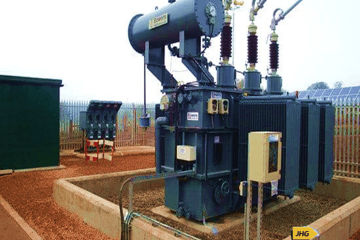Transformers play a vital role in the efficient transmission and distribution of electrical power. Regular servicing of transformers is crucial to ensure their longevity and optimal performance. Transformer servicing involves a comprehensive inspection of critical components, addressing potential issues before they escalate into major problems.
In this article, we will delve into the key components inspected during transformer servicing and their significance in maintaining a reliable power supply infrastructure.
Insulation System: Protecting Electrical Integrity
The insulation system is a crucial component in transformers, safeguarding the electrical integrity of the equipment. During servicing, our experts meticulously inspect the insulating materials for signs of deterioration, such as fractures, discoloration, or brittleness. Ageing and exposure to external variables can weaken insulation, leading to diminished dielectric strength.
Regular inspection is imperative for detecting potential risks and facilitating timely repairs or replacements, thereby avoiding major breakdowns and ensuring the transformer continues to function properly.
Bushings: Preserving Insulation Integrity
Transformer bushings serve as a connection between internal components and exterior electrical connections. They play a critical role in preserving insulation integrity and facilitating the transmission of electrical energy. During servicing, our technicians meticulously examine the bushings for indications of oil leaks, fractures, or physical deterioration.
Additionally, power factor tests are conducted to evaluate the insulation state. Faulty bushings can cause a decline in dielectric strength, potentially resulting in partial or full transformer failure. Timely repair or replacement of faulty bushings is crucial for the transformer’s dependability.
Tap Changer Mechanism: Regulating Voltage Levels
The tap changer is a mechanism that allows adjustment of the transformer’s turns ratio to regulate voltage levels. Regular servicing involves inspecting the tap changer for proper operation, oil condition, and mechanical integrity. Issues with the tap changer can impact voltage regulation, affecting the quality of power delivered to end-users.
Our technicians may conduct tests, such as dynamic resistance measurements, to ensure the tap changer’s functionality and reliability. Promptly addressing tap changer issues ensures the transformer’s ability to adapt to varying load conditions.
Cooling System: Maintaining Optimal Operating Temperature
Efficient cooling is essential for maintaining a transformer’s operating temperature within acceptable limits. Overheating can accelerate ageing and lead to insulation failure. Transformer servicing includes a thorough examination of the cooling system, including radiators or cooling fins, oil pumps, and fans. Our technicians check for clogs, leaks, and proper oil circulation.
Regular cleaning and maintenance of the cooling system components contribute to the transformer’s longevity and sustained performance.
Core and Windings: Fundamental Components
The core and windings are fundamental components responsible for transforming electrical energy. Servicing involves visual inspection, insulation resistance tests, and core insulation tests to assess their condition. Any hotspots, deformation, or signs of arcing indicate potential problems that need attention.
Regular testing and maintenance help identify issues early, preventing further damage and ensuring the transformer’s reliability in delivering stable electrical power.
Oil Quality and Analysis: Ensuring Optimal Performance
Transformer cooling oil or insulating oil serves multiple purposes, including insulation, cooling, and arc suppression. During servicing, our technicians collect oil samples for analysis to assess their condition. Various tests, such as dissolved gas analysis (DGA), moisture content, and acidity tests, provide insights into the health of the transformer.
Contaminated or degraded oil can compromise performance and lead to insulation failure. Regular oil analysis and replacement significantly contribute to the transformer’s longevity and reliability.
Conclusion: Investing in Proactive Servicing Practices
Transformer servicing is critical for maintaining a robust electrical power infrastructure. Regular maintenance ensures optimal performance and extends the transformer’s lifespan, contributing to a reliable and efficient power supply. Investing in proactive servicing practices is essential for mitigating risks, reducing downtime, and upholding the integrity of electrical systems.
At Just HardRich Global Resources Limited, we are committed to delivering comprehensive transformer maintenance services. Contact us today for expert solutions tailored to your specific needs. Ensure the longevity and optimal performance of your electrical assets with our dedicated servicing practices. Trust Just HardRich Global Resources Limited for your transformer maintenance needs.




